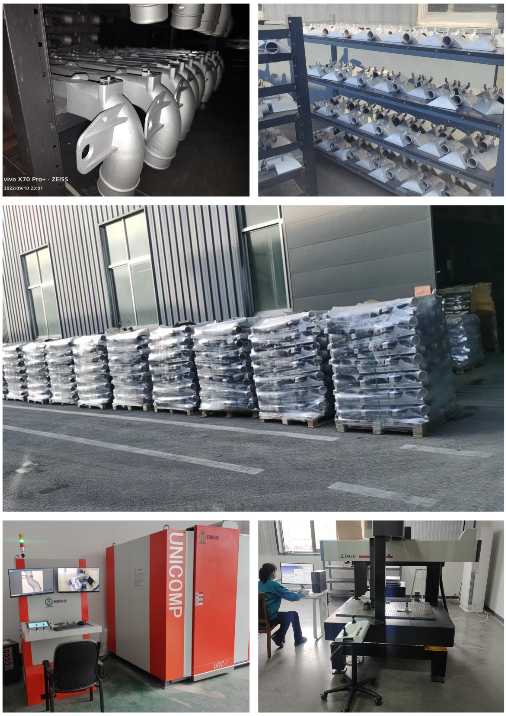Introduction
When it comes to aluminum casting, one of the most critical factors determining the quality and efficiency of the final product is the mold used in the casting process. A high-quality aluminum casting mold ensures precision, durability, and consistent results. Understanding the different types of molds, the materials used in their construction, and how they impact production can help manufacturers optimize their casting operations.
In this article, we will explore the various types of aluminum casting molds, the materials used to make them, and the key considerations for selecting the right mold for your casting needs.
What Are Aluminum Casting Molds?
An aluminum casting mold is a cavity made from a specific material designed to hold molten aluminum until it solidifies into a final shape. These molds play a pivotal role in determining the precision, strength, and surface finish of the aluminum parts produced. The mold’s material and design directly influence the casting’s quality, cost, and production speed.
The most common aluminum casting processes—such as gravity die casting, low pressure die casting, and permanent mold casting—all rely on specialized molds. Each process has its own specific mold requirements depending on factors like part size, complexity, and desired surface finish.
Types of Aluminum Casting Molds
There are several types of molds used in the aluminum casting process, each with its own set of advantages and ideal applications. Here’s a breakdown of the most commonly used aluminum casting molds:
1. Permanent Molds (Steel Molds)
Description: Permanent molds, also known as metal molds, are made from durable materials like steel or iron. These molds are reusable, designed to withstand high temperatures, and are ideal for producing medium to large quantities of aluminum castings.
Advantages:
- High dimensional accuracy and surface finish.
- Excellent for mass production due to mold reusability.
- Long mold life when properly maintained.
Applications:
- Automotive parts (e.g., engine blocks, transmission housings).
- Aerospace components.
- Industrial parts requiring high precision.
2. Sand Molds (Green Sand and Resin Sand)
Description: Sand casting is one of the most popular and oldest forms of casting. Sand molds are typically made from a mixture of sand, clay, and water or resin. These molds are used for complex or large parts and can be created quickly and cost-effectively.
Advantages:
- Ideal for complex and large parts.
- Low initial mold cost.
- Can be used for both small and large production runs.
Applications:
- Custom parts for industries like automotive, aerospace, and heavy machinery.
- Large, heavy parts like engine blocks or pump housings.
- Short-run or prototype casting.
3. Investment Molds (Shell Molding)
Description: Investment casting, or lost-wax casting, involves creating a mold around a wax model that is later melted away. The mold is typically made from ceramic materials, offering excellent surface finish and precision. This method is ideal for producing high-precision and small aluminum parts.
Advantages:
- High precision and smooth surface finish.
- Capable of casting very intricate designs.
- Excellent for small parts with complex shapes.
Applications:
- Aerospace components like turbine blades and structural parts.
- Medical devices and custom jewelry.
- Small, highly detailed components.
4. Die Molds (Die Casting)
Description: Die casting molds are made from steel and are designed to handle high-pressure injection of molten aluminum into cavities. These molds are used in high-volume production and are particularly suitable for parts that require uniform thickness, fine details, and excellent dimensional accuracy.
Advantages:
- High precision and surface finish.
- Fast production rates.
- Ideal for mass production of aluminum parts.
Applications:
- Consumer electronics, automotive, and appliance components.
- Highly detailed parts such as housings, enclosures, and brackets.
- High-volume production runs.
Materials Used in Aluminum Casting Molds
The material chosen for the casting mold significantly influences the quality and longevity of the mold, as well as the performance of the final aluminum part. Here are the key materials used in making aluminum casting molds:
1. Steel
Steel is one of the most common materials used for permanent molds and die molds due to its high strength, thermal conductivity, and durability. Steel molds can handle repeated use and high temperatures, making them ideal for high-volume casting operations.
2. Iron
Iron molds are often used for permanent mold casting processes. They provide good thermal conductivity, are durable, and are highly resistant to wear, making them suitable for casting parts in industries like automotive and aerospace.
3. Sand (Silica Sand)
For sand molds, silica sand is the most commonly used material. It is inexpensive, versatile, and easy to work with. Sand molds are typically used in green sand or resin sand casting processes, depending on the specific requirements of the casting job.
4. Ceramic
Ceramic materials are used in investment casting to produce highly detailed and precise molds. These molds offer excellent surface finishes and are capable of withstanding high temperatures, making them ideal for intricate parts, such as turbine blades and other high-performance components.
5. Graphite
In some specialized casting applications, graphite molds are used for casting aluminum. Graphite provides excellent thermal conductivity and is ideal for casting parts where rapid cooling is needed.
Factors to Consider When Choosing an Aluminum Casting Mold
Choosing the right mold for aluminum casting depends on several key factors:
- Part Complexity: If your part requires intricate details or a smooth finish, investment casting or die casting might be the best choice.
- Production Volume: For high-volume production, permanent molds or die casting molds are preferred due to their durability and quick cycle times.
- Material Properties: Different casting methods and molds provide varying degrees of strength, surface finish, and dimensional accuracy. Consider your end product’s requirements carefully.
- Cost: Molds made from steel or graphite can be expensive, but their longevity can reduce costs over time for high-volume production. Sand molds are cheaper and better suited for low-volume runs.
Conclusion: Selecting the Right Aluminum Casting Mold
The mold you choose for your aluminum casting process plays a crucial role in determining the quality and cost of the final product. Whether you’re looking for precision, durability, or a cost-effective solution for high-volume production, understanding the different types of molds and their applications will help you make an informed decision.
If you’re unsure which type of mold is best for your specific casting needs, we can guide you in selecting the ideal solution for your production goals. Contact us today for expert advice and support in your casting process.
Contact Us for Your Aluminium Casting Mold Solutions
Looking for high-quality aluminum molds for your next project? We offer a range of molds for different casting processes and applications.
Email Us for more information.

